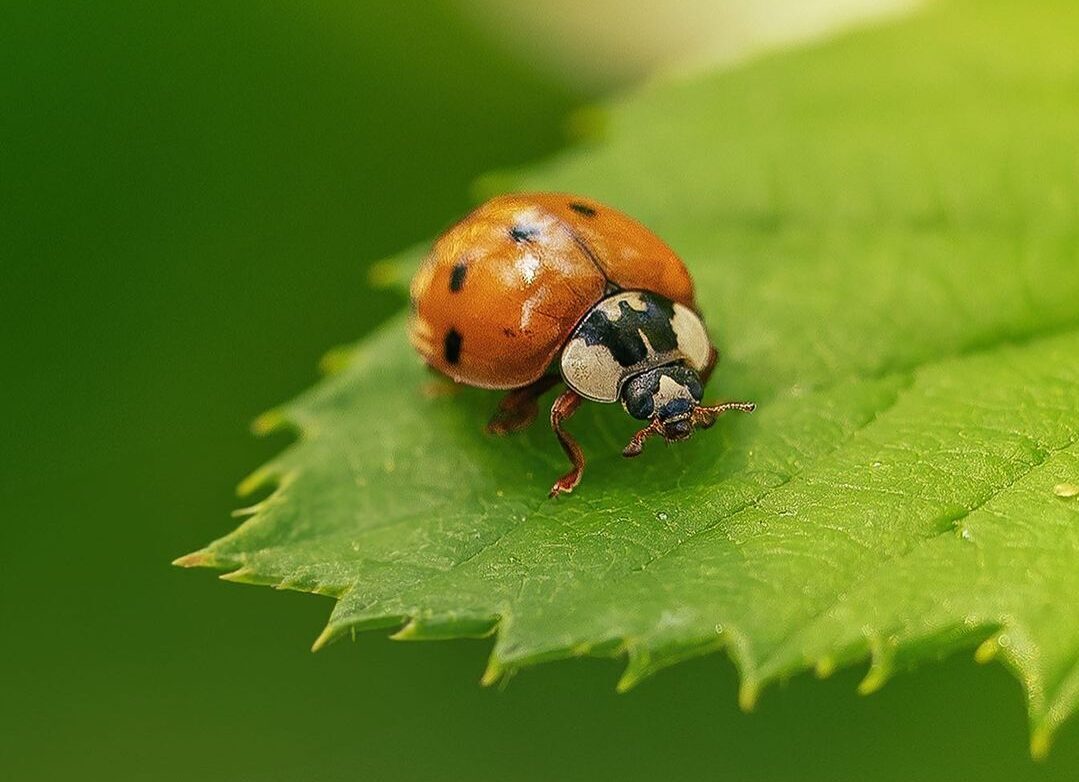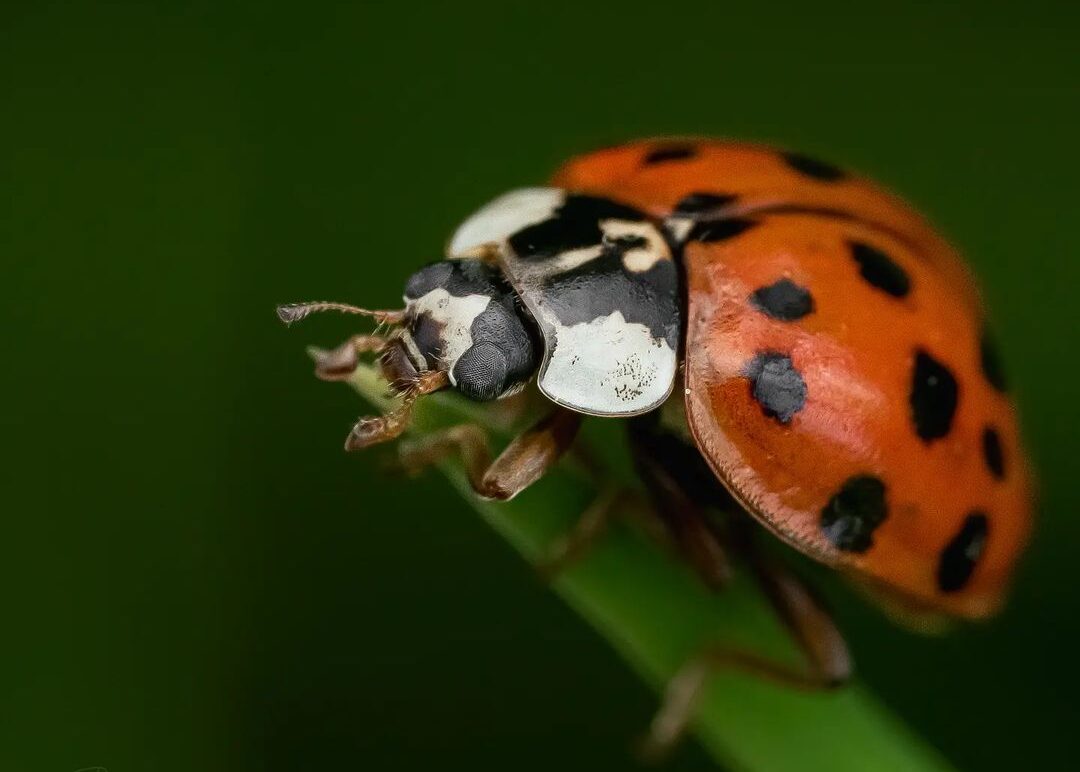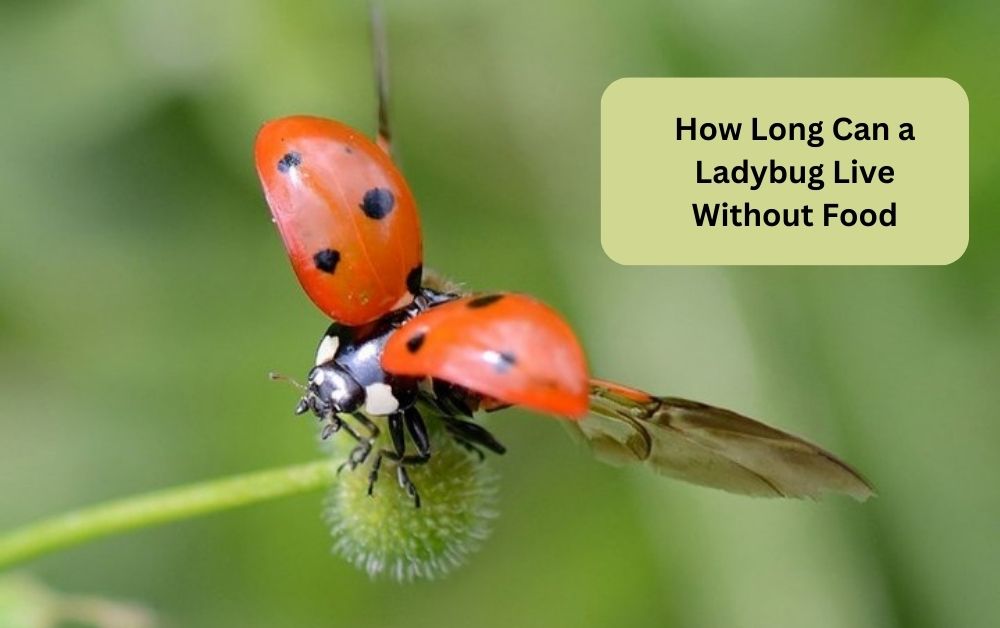How long can a ladybug live without food? It’s a question that may have crossed your mind while observing these charming, spotted beetles in your garden. These tiny creatures, with their vibrant colors and endearing appearance, often capture our curiosity. In this article, we’re about to unveil the intriguing secrets behind the ladybug’s remarkable ability to endure periods of food scarcity.
Ladybugs, scientifically known as Coccinellidae, are much more than just pretty insects. They play a vital role in maintaining the balance of our ecosystems by acting as natural pest controllers. But what happens when their food supply dwindles? How do they manage to survive?
The short answer is that ladybugs can go without food for a short period, typically a few days to a week. However, what makes them truly fascinating is their ability to enter a state of dormancy when food becomes scarce. During this period, they slow down their metabolic processes, conserving energy until they can find their next meal.
But that’s just the beginning of the story. Ladybugs have evolved several strategies for both short-term and long-term survival without food. From storing nutrients to altering their behavior, these insects have adapted in remarkable ways to thrive even in challenging conditions.
In this article, we’ll explore the intricacies of ladybugs’ survival tactics, delving into the science behind their resilience. So, if you’ve ever wondered about the secrets of how long a ladybug can live without food, read on. You’re in for a fascinating journey into the world of these tiny, resilient creatures.
Understanding Ladybugs
Ladybugs, scientifically known as Coccinellidae, are a captivating family of small beetles that have garnered admiration worldwide. Their striking appearance and invaluable role in nature make them stand out among insects.
Ladybugs are easily recognizable due to their distinctive round or oval shape and vibrant colors. They come in various species, each adorned with its unique combination of spots.
While the most familiar ladybug is red or orange with black spots, they can also be yellow, brown, or even black, with varying spot patterns. Their colorful appearance serves as a natural warning sign to potential predators, signaling that they might taste unpleasant or even be toxic.
Beyond their aesthetic charm, ladybugs are incredibly beneficial to the ecosystem. They are renowned as natural pest controllers, earning them the affectionate nickname of “gardener’s best friend.” Their primary diet consists of soft-bodied insects such as aphids, mealybugs, mites, and other garden pests.

Importance as Natural Pest Controllers:
Ladybugs play a pivotal role in maintaining the balance of our ecosystems. Here’s how:
- Pests Control: Aphids, mealybugs, and whiteflies are notorious garden pests that can wreak havoc on plants by sucking their sap. Ladybugs are voracious predators of aphids, helping to keep their populations in check. A single ladybug can devour hundreds of aphids in a day.
- Reduction of Pesticide Use: By naturally controlling pest populations, ladybugs reduce the need for harmful pesticides in agriculture and gardening. This not only protects beneficial insects but also safeguards the environment from chemical pollution.
- Ecosystem Health: Ladybugs contribute to the overall health of the ecosystem by preventing the overgrowth of destructive insects. This, in turn, supports the growth of plants and the well-being of other organisms in the food chain.
Ladybugs are more than just visually appealing insects; they are essential allies in maintaining the health of our gardens and natural environments. Their role as natural pest controllers not only benefits plant life but also contributes to a more sustainable and balanced ecosystem
The Importance of Food to Ladybugs
Ladybugs, those charming and colorful beetles, are more than just pretty faces in the garden. Their vibrant appearance masks a voracious appetite for some of the most troublesome pests that plague our plants. Food is not just a necessity for these tiny insects; it’s the fuel that powers their vital role as nature’s pest controllers.
Ladybugs’ Diet: A Diverse Menu
Ladybugs have a diverse and ever-evolving menu, with a preference for soft-bodied insects. Here’s a glimpse of some of their favorite prey:
- Aphids: Aphids are notorious for wreaking havoc on plants by sucking out their sap. Ladybugs are their sworn enemies, and they can consume large quantities of aphids in a single day.
- Mealybugs: These tiny, cottony insects might be inconspicuous, but they can weaken plants by feeding on their juices. Ladybugs find them delectable and help keep their populations in check.
- Mites: Mites can infest plants and cause extensive damage. Ladybugs come to the rescue by feeding on these tiny arachnids.
- Small Caterpillars: Ladybugs are not limited to just tiny insects. They also have a taste for small caterpillars, which can be destructive to plants if left unchecked.
By preying on these pests, ladybugs play a pivotal role in maintaining the health of our gardens and crops. Their diet isn’t just about satisfying hunger; it’s a crucial component of a finely balanced ecosystem.
Every meal for a ladybug is more than just sustenance; it’s energy that fuels their activities. When they feed on aphids, mealybugs, mites, and caterpillars, they not only satiate their hunger but also contribute to the overall well-being of the plants. By keeping these harmful insects in check, ladybugs ensure that our green spaces thrive.
So, the next time you see a ladybug delicately moving through your garden, remember that they are more than just charming guests; they are essential contributors to the delicate balance of nature. Their choice of food isn’t merely a preference; it’s a commitment to maintaining harmony in the world of plants and insects.
How Long Can a Ladybug Go Without Food?
Ladybugs, those delightful and resilient insects, possess a remarkable ability to endure periods of food scarcity. In specific terms, a ladybug can typically go without food for about 7 to 14 days. However, this is just the beginning of their impressive survival story.
Ladybugs have a few tricks up their spotted sleeves for surviving short-term food shortages. When their primary food sources, such as aphids or mealybugs, become scarce, ladybugs can rely on their energy reserves. They store excess nutrients obtained from previous feasts in their bodies, essentially creating an emergency energy stash. This stored energy allows them to endure for several days up to 4 weeks without a meal.
Moreover, ladybugs can enter a state of dormancy when food is hard to come by. During this period, they reduce their activity and metabolic rate, conserving energy. This is akin to a form of hibernation, enabling them to patiently await more favorable conditions for feeding.
Long-Term Survival:
When it comes to long-term survival without food, ladybugs can surprise us. In optimal conditions, some ladybugs have been known to survive without food for several weeks, and in some cases, even months. The exact duration varies due to factors such as environmental conditions, the ladybug’s age, and its overall health.
During extended periods without food, ladybugs continue to rely on their energy reserves, drawing from the stored nutrients within their bodies. This allows them to maintain essential bodily functions while waiting for their favorite prey to make a comeback.
They are resilient and adaptable insects that have evolved strategies to cope with food shortages. Their ability to go without food for up to two weeks, and sometimes longer, showcases their remarkable survival skills and underscores their importance as natural pest controllers in our ecosystems. So, the next time you spot a ladybug in your garden, remember that it’s not just a symbol of good luck but also a testament to nature’s ingenuity.

Do Ladybugs Eat Plants when they are hungry?
No, ladybugs do not typically eat plants, even when they are hungry. Ladybugs are obligate carnivores, meaning they rely exclusively on a diet of other insects. Their preferred prey includes soft-bodied insects like aphids, mealybugs, mites, and small caterpillars.
While ladybugs may occasionally drink nectar or consume pollen for moisture and sustenance, plant material is not a primary food source for them. They are highly specialized predators and play a crucial role in controlling pest populations in gardens and agricultural settings.
How Many Aphids Can a Ladybug Eat in a Day?
Ladybugs are incredibly efficient predators, and their appetites are truly impressive. On average, a single ladybug can consume approximately 20 to 100 aphids in a day, depending on various factors. The number of aphids a ladybug can eat depends on its size, the availability of prey, and its metabolic rate.
Larger ladybugs can typically consume more aphids than smaller ones. When aphid populations are abundant, ladybugs can have a significant impact on reducing pest infestations in gardens and agricultural fields. This makes them valuable allies for natural pest control and a beneficial addition to any ecosystem.
Can Ladybugs Survive on Nectar or Pollen?
Ladybugs are primarily carnivorous insects, and their main source of nutrition comes from eating other insects, especially soft-bodied pests like aphids, mealybugs, and mites. While they are not herbivores, ladybugs may occasionally consume nectar and pollen, but these substances are not their primary food source.
Nectar and pollen serve as supplementary food for ladybugs, providing them with some additional nutrients and moisture. This behavior is more common when their preferred prey is scarce. However, ladybugs cannot thrive solely on nectar or pollen, as they require the protein and nutrients obtained from eating insects to complete their life cycle, reproduce, and maintain their health.
Tips for Attracting Ladybugs to Your Garden
Ladybugs are not only charming but also incredibly beneficial for your garden. By attracting them, you can promote a natural and eco-friendly way to control pest populations. Here are some tips to encourage ladybugs to make your garden their home:
- Plant Nectar and Pollen-Rich Flowers: Ladybugs need nectar and pollen for sustenance when they are not preying on insects. Plant a variety of flowers that produce nectar and pollen, such as marigolds, daisies, and asters. These will not only provide food for ladybugs but also add beauty to your garden.
- Avoid Pesticides: Ladybugs are highly sensitive to pesticides, which can harm or kill them. To attract and maintain a ladybug population in your garden, opt for natural pest control methods and minimize the use of chemical pesticides. Encourage a balanced ecosystem where ladybugs can thrive.
- Provide Shelter: Ladybugs seek shelter during inclement weather and when they lay their eggs. Create hiding spots for them by placing rocks, logs, or leaf piles strategically in your garden. Ladybugs will use these areas for protection and as a place to overwinter.
- Diverse Plantings: Cultivate a diverse garden with various plant species. Different plants attract different insects, providing ladybugs with a steady source of food. Ladybugs often follow their prey, so a variety of plants can help maintain a resident ladybug population.
- Limit Light Pollution: Ladybugs are more active during the day and less so at night. Excessive outdoor lighting can disrupt their natural behavior. Reducing light pollution can help ladybugs feel more at home in your garden.
- Release Ladybugs: If you’re dealing with a specific pest problem in your garden, you can purchase ladybugs (available at garden centers) and release them strategically to combat the pests. Make sure you release them in the evening near infested plants so they can begin hunting right away.
- Patience: Attracting ladybugs to your garden may take some time. Be patient and create a hospitable environment, and over time, you’ll likely see an increase in their presence.
By following these tips, you can create an environment that is welcoming to ladybugs, encouraging them to stay and help you keep harmful pests at bay while adding a touch of natural beauty to your garden.
Conclusion
In conclusion, ladybugs are not just cute, colorful insects that bring joy to our gardens; they are essential allies in maintaining the health of our green spaces. Understanding their dietary habits, survival strategies, and preferences is key to attracting and supporting these valuable contributors to our ecosystems.
Ladybugs thrive on a diet of soft-bodied insects, such as aphids, mealybugs, and mites, making them natural pest controllers. They can consume impressive quantities of these pests daily, helping to keep gardens and crops healthy. When it comes to their own survival, ladybugs can go without food for about 7 to 14 days, thanks to their ability to store energy and enter a state of dormancy when necessary.
To invite ladybugs into your garden, create a welcoming environment by planting nectar and pollen-rich flowers, avoiding pesticides, and providing shelter. Remember that ladybugs are highly sensitive to pesticides, so opting for natural pest control methods is not only beneficial for them but also for your garden’s overall health.
By implementing these tips and fostering a ladybug-friendly habitat, you can enjoy the benefits of these tiny, resilient creatures as they help you maintain a balanced and pest-free garden. Ladybugs are not just insects; they are nature’s unsung heroes, working tirelessly to protect the beauty and vitality of our outdoor spaces. So, embrace their presence, and let ladybugs be your garden’s little champions.
